Larks and Swallows of Maricopa County
Horned Lark Eremophila alpestris
The common and widespread Horned Lark is a distinctive bird at all times despite having an eyeraising amount of subspecies. This bird is found in open and plowed fields, grasslands, sod farms, and beaches. The male Horned Lark has an amazing display flight, which may reach up to 800 feet high. This bird forages and walks on the ground, searching for seeds and insects. Large numbers of Horned Larks may be observed in Maricopa County throughout the year, especially in non-breeding seasons in large numbers. Look in grassy fields as well as plowed fields, dry pond basins, and places like the Rousseau Sod Farms (Area 5).
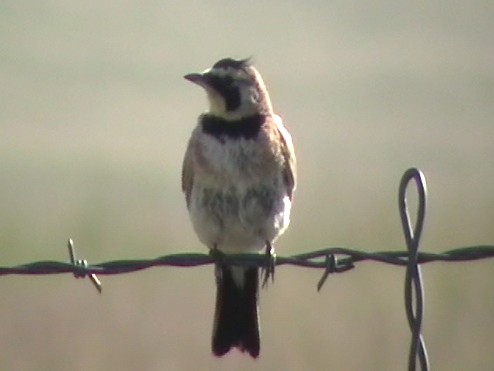
Northern Rough-winged Swallow Stelgidopteryx serripennis
The Northern Rough-winged Swallow is widespread throughout much of North America, where it prefers open areas and fields that often have water nearby. This plain swallow nests on riverbanks and under bridges. It can be seen in Maricopa County more than any other swallow throughout the year. Rivers, ponds, and fields, as well as under bridges, are the best place to look. It is often seen in mixed flocks with other swallows, and eats insects in flight.
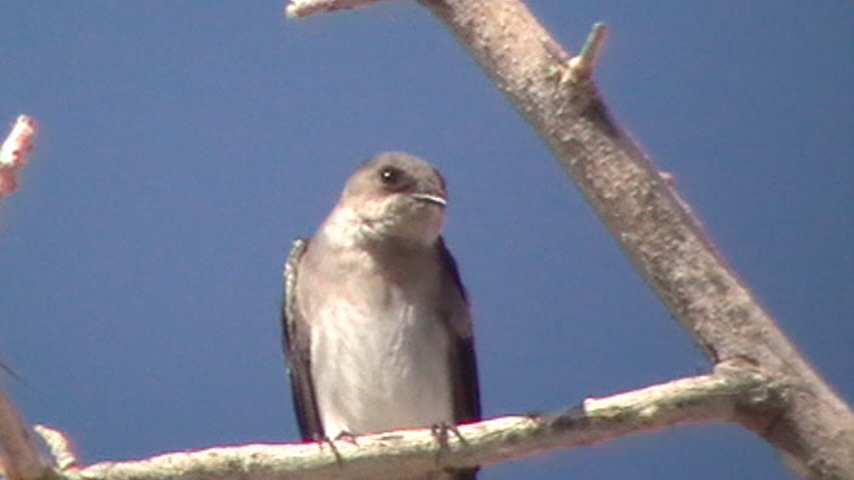
Tree Swallow Tachycineta bicolor
The Tree Swallow is one of the earliest migrating swallows to head to it's northbound breeding destinations. This bird is often present in high numbers while migrating, as flocks gather around ponds and lakes to feed on insects. It prefers to breed near water in wooded habitats. The Tree Swallow has a very widespread breeding range in North America, and is very common where present. In Maricopa County, look for Tree Swallow in spring and fall migrations. Birds are most often seen in the county in late winter actually starting in February and continuing through April. In fall, September through October is a good time frame.
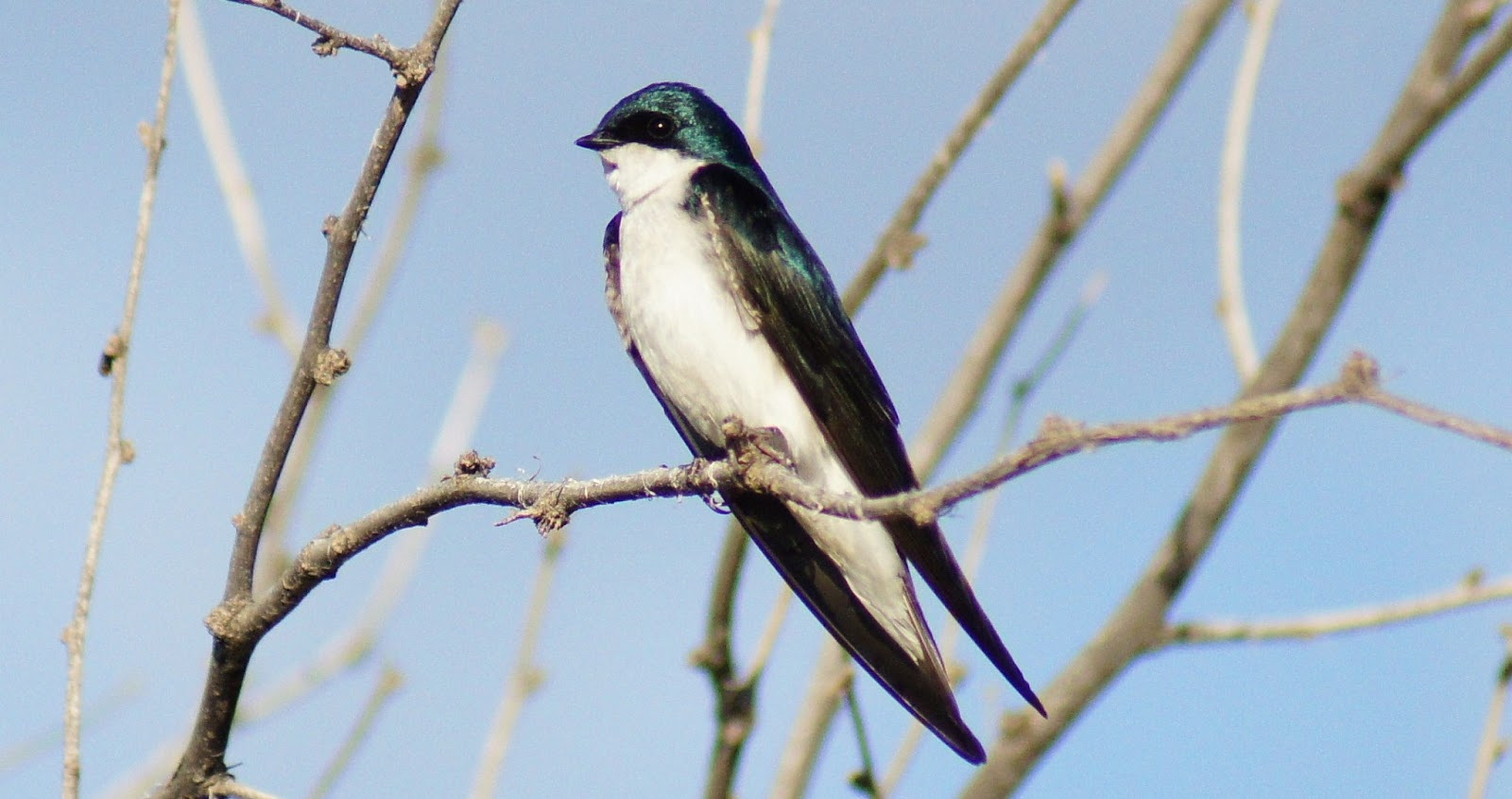
Violet-green Swallow Tachycineta thalassina
This beautiful swallow is found throughout much of the west. It nests in groups, found in high elevation forests in holes of dead trees, where it is commonly seen and heard overhead. This swallow feeds on insects, and many of it's kind are not often near water during breeding season. Migrating birds feed heavily over aquatic habitats. In Maricopa County, the Violet-green Swallow is found in the higher pine and oak habitats in Maricopa County when breeding. The best place to observe this swallow is near the top of Mount Ord (Area 1), where large numbers are often observed. Migrant Violet-green Swallows are found in both migration periods, most often with good spring times being March and April and fall times most often being September and October.
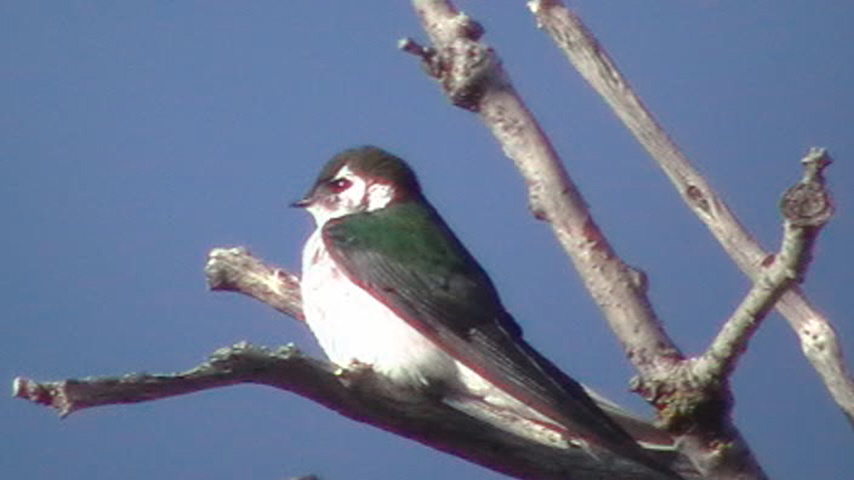
Bank Swallow Riparia riparia
True to it's name, the Bank Swallow builds burrows in riverbanks, where it nests and finds it's home. This is the smallest swallow in North America, and has a widespread range throughout much of North America (except most of the southern states, including Arizona). It is often seen in smaller numbers than other swallows during migration in Maricopa County, but can still be rather common. The Bank Swallow is often seen with other swallows while feeding over a pond or river in migration during an insect feast. It's brown breast band is the best way to identify this species and is distinctive among other swallows. In the migrations in the county, look for Bank Swallows especially in April and May in spring migration as well as August and September especially in fall migration.

Barn Swallow Hirundo rustica
This beautiful swallow is widespread throughout almost all of North America during the breeding season. The Barn Swallow nests in barns and buildings and other man-made structures. It's long and forked tail is very distinctive among swallows and gives this bird a very graceful look. Barn Swallows are mainly seen in migration in Maricopa County, especially in spring migration during March and April, and in fall migration especially in September and October. Look for them over ponds, lakes, rivers, and fields as they search for insects.
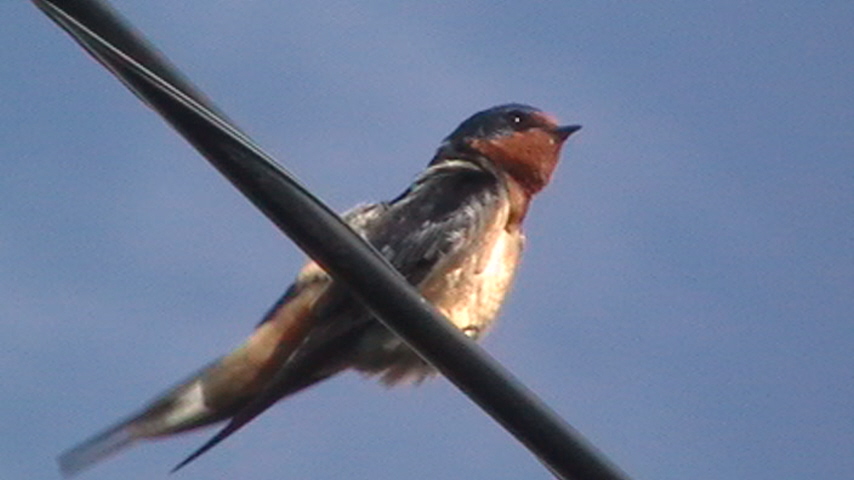
Cliff Swallow Petrochelidon pyrrhonota
Cliff Swallows nest under bridges and on cliffs in huge colonies throughout their breeding range, which is a very widespread range throughout most of North America. These swallows are early spring and fall migrants, and can be found in Maricopa County from March through September. They best seen in areas with water nearby, often with bridges. Field marks to look for on this swallow include a buffy-colored rump, dark head, and white forehead. Cliff Swallows can be found in many areas and hotspots thoughout Maricopa County easily.
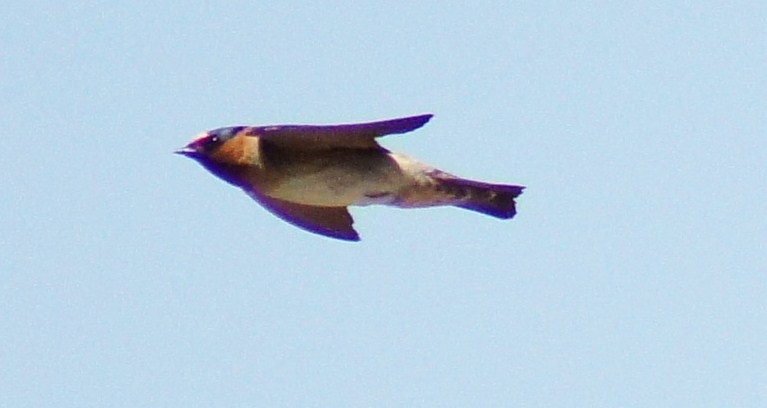
Also keep an eye out for....
Purple Martin Progne subis
The Purple Martin is much larger than any other regularly occuring swallow in North America. This bird favors areas near water and often nests in dead and hollow trees in woodlands when not nesting in martin boxes. Man-made homes in Purple Martin nestboxes have become more of a nesting location for this species than natural habitats. The Purple Martin is extremely common in eastern North America, and limited in the west. In Maricopa County, a Purple Martin is often hard to come across. Look for this bird in migration, especially with mixed flocks of swallows, as it probably migrates through the county annually. A southwestern subspecies of Purple Martin nests in the desert in saguaro cactus holes. It is very local and hard to find breeding in Maricopa County, but has been detected recently (John Arnett).
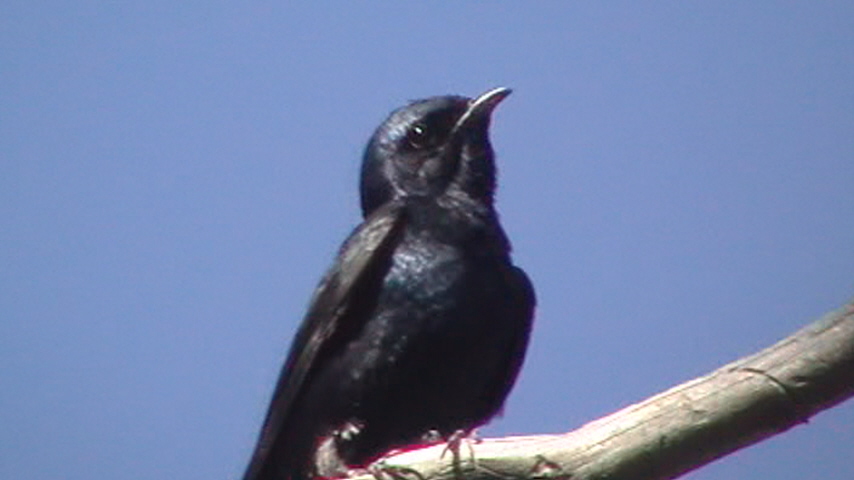
Back to What Bird Are You After? main page. | 